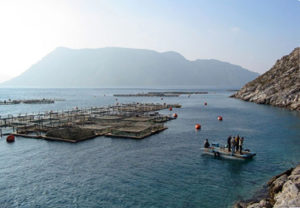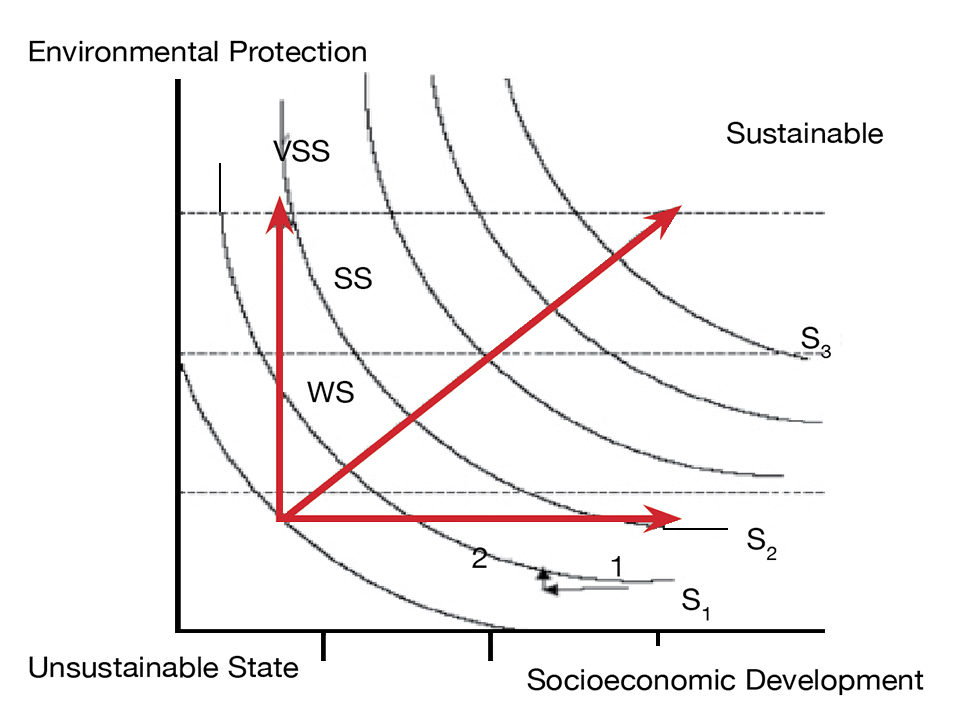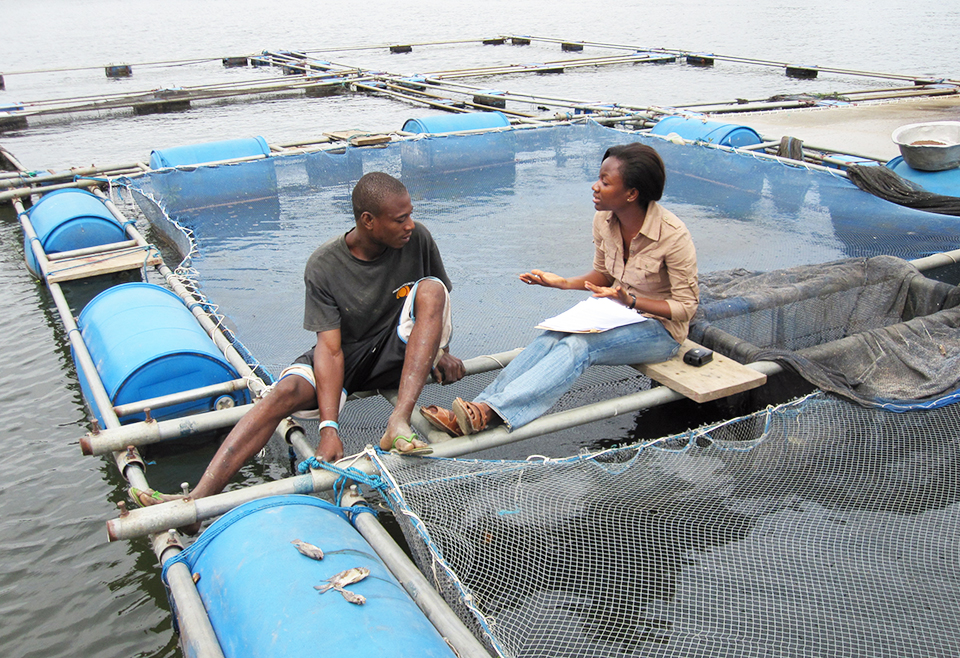Farming has key roles to play in rural development, reversing declines in fishing communities

Many new European Union policies promote sustainability rather than economic development as a general society’s aim, but evaluation of sustainability has limited applications. The method initially developed by the Laboratory for Local and Insular Development of the Department for Environment of Aegean University allows the estimation of sustainability levels in an island region and the footprints of the activities in the area.
This method has been adapted to measure the contribution of marine fish farming to the sustainable development of island regions. Part of this research uses the Delphi method to specify the factors that affect marine fish farming and the proper indicators for their measurement.
Sustainable development of island regions
There is a need for practically applicable models, guidelines and analytical frameworks that can help decision makers and administrators resolve trade-offs and direct limited financial resources toward projects or regions where the expected returns are greatest. The specific characteristics of islands – a combination of factors – always affect their economic development, and their sustainability levels are higher if their development is not dependent on a single activity.
With several activities, the economic risk is lower, and the stress on natural resources is less important. An aquaculture development plan for an island region must have as an objective to provide a sound basis for development, while at the same time conserving the unique environment of the islands for present and future generations.
The establishment of fish farms on islands is based on a comparative advantage. The farms, mainly utilizing floating cages, use two resources that are in great abundance at the islands: clean seawater and easy access from the often remote beaches. Even if there are difficulties today, investors will continue to show interest in establishing fish farms in island regions.
However, questions remain about whether and how this human activity can contribute to the islands’ sustainable development. Concerns related to the environment, health and animal welfare issues, and potential conflicts with fisheries and recreational activities require further attention.
Resource utilization
Marine aquaculture is a new competitor for limited resources, and this should be judged on the basis of the efficiency of resource utilization as well as environmental compatibility. Mariculture has important roles to play in rural development and in reversing declines in fishing communities. Common criteria should be used for evaluating all economic activities, and including socioeconomic and environmental costs and benefits is a good approach.
Through the author’s research, a simple system is proposed that can monitor the “progress” of each local area by calculating indicators that measure the state and its change over time as pressure comes from mariculture. This approach reflects the fact that sustainable development has different content for different societies, and comparisons can be misleading. The advantage of this approach is that it compares similar states of sustainability for the same society and yields meaningful results.
Measuring sustainability
The sustainability analysis calls for the consensual setting of a “band of equilibrium” for a list of indicators that makes it possible to evaluate the sustainability of the present situation in a target region and to determine what is desirable or unacceptable. The projection of these indicators also makes it possible to evaluate the region’s sustainable development levels – and thus its future sustainability.
To have a better picture of the progress in each of the three dimensions of sustainability (economy, environment and society) separately, and to help policy makers make clear suggestions, the overall number of factors is taken into consideration. However, this does not mean the different factors receive the same weight.
The purpose of the research is not to consider the prospect of sustainability of the industry, but the development of a methodology and a specific set of indicators to assess the contribution of marine aquaculture to the sustainable development of the islands where culture facilities are installed. This is achieved through the implementation of two kinds of measurements: the performance and impacts of marine fish farming, and the factors that affect the performance and impacts.
Performance, impacts
Based on the United Nations Environment Program’s Driving force, Pressure, State and Response (DPSR) approach, the method developed by the author evaluates activities based on two steps: the performance per production unit, which relates to the added value, the employment created in the area, water use, energy use and waste production; and the scale of the examined human activity compared to the carrying capacity of the host area.
In this method, sustainable development is considered a continuous process that leads simultaneously to improvement of the economic, social and environmental goals adopted by each local society (Fig. 1).

The system of measurement is relatively simple, relying mainly on published or easily accessible data, and the selection and weighting of indicators made using the Delphi method. The method could be used to identify inappropriate sites for projects in areas that initially had been considered suitable for aquaculture development.
Monitoring practices would ensure that the established activities do not lead to deviation from the sustainability targets. At the end of the policy period, evaluation practices would determine whether the overall state of the sustainable development of the island had been improved.
With proper assessment of the contribution of each activity, we can propose policies through which we continue to examine the possibility of establishing new farms or expanding the existing ones in a way that supports sustainable development via the productive activities of the primary sector, while preserving the unique identity of each island.
(Editor’s Note: This article was originally published in the July/August 2012 print edition of the Global Aquaculture Advocate.)
Author
-
Dr. Michael Chatziefstathiou
Minister’s Advisor on Fisheries
Greek Ministry of Development, Competiveness and Shipping
Port Gates E1-E2, Akti Vasileiadi
GR-18510, Pireaus, Greece[114,103,46,110,97,101,103,101,97,46,118,110,101,64,105,122,116,97,104,109]
Tagged With
Related Posts

Responsibility
A look at integrated multi-trophic aquaculture
In integrated multi-trophic aquaculture, farmers combine the cultivation of fed species such as finfish or shrimp with extractive seaweeds, aquatic plants and shellfish and other invertebrates that recapture organic and inorganic particulate nutrients for their growth.

Health & Welfare
A look at tilapia aquaculture in Ghana
Aquaculture in Ghana has overcome its historic fits and starts and is helping to narrow the gap between domestic seafood production and consumption. Production is based on Nile tilapia.

Responsibility
A look at various intensive shrimp farming systems in Asia
The impact of diseases led some Asian shrimp farming countries to develop biofloc and recirculation aquaculture system (RAS) production technologies. Treating incoming water for culture operations and wastewater treatment are biosecurity measures for disease prevention and control.

Aquafeeds
A look at protease enzymes in crustacean nutrition
Food digestion involves digestive enzymes to break down polymeric macromolecules and facilitate nutrient absorption. Enzyme supplementation in aquafeeds is a major alternative to improve feed quality and nutrient digestibility, gut health, compensate digestive enzymes when needed, and may also improve immune responses.


